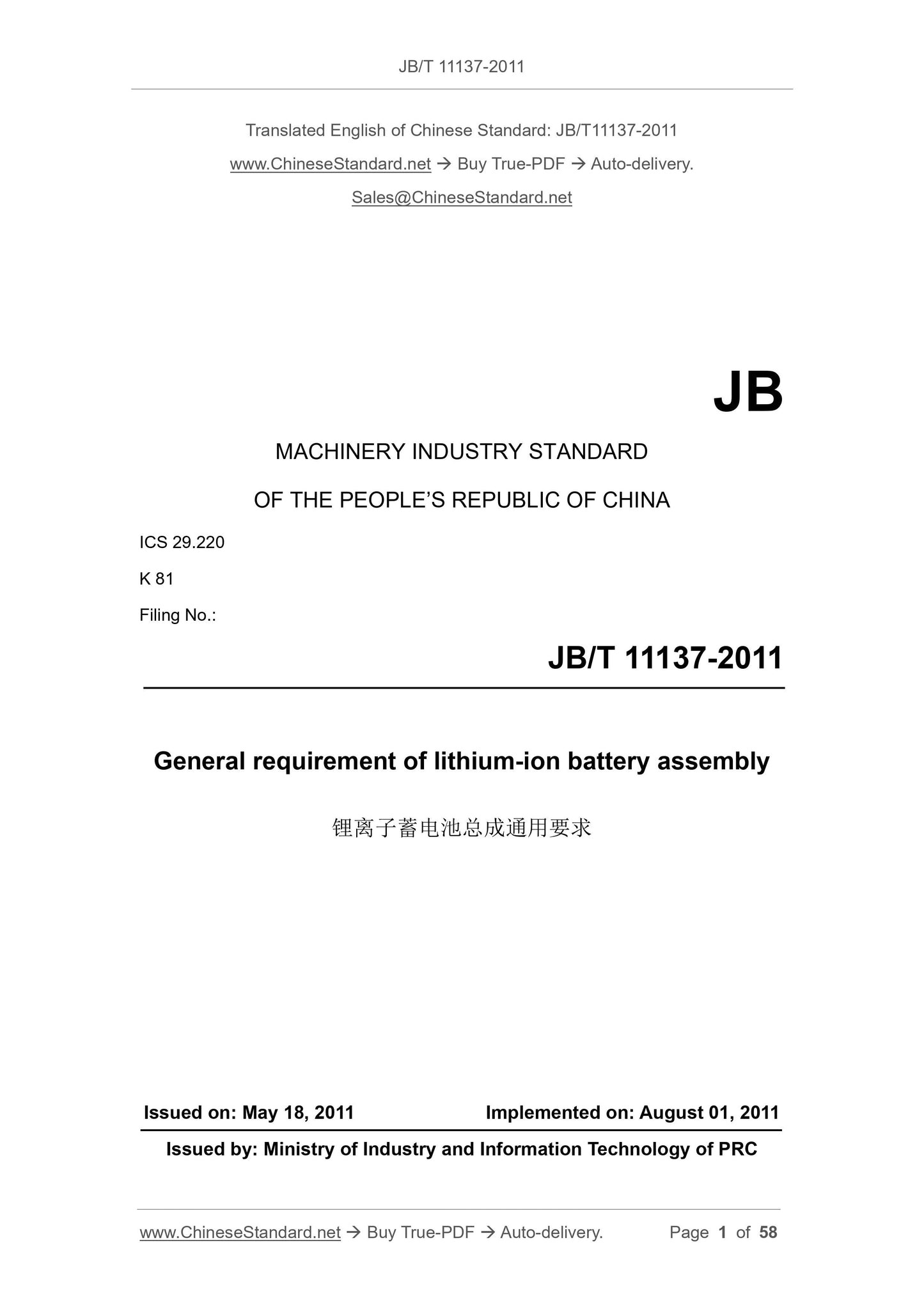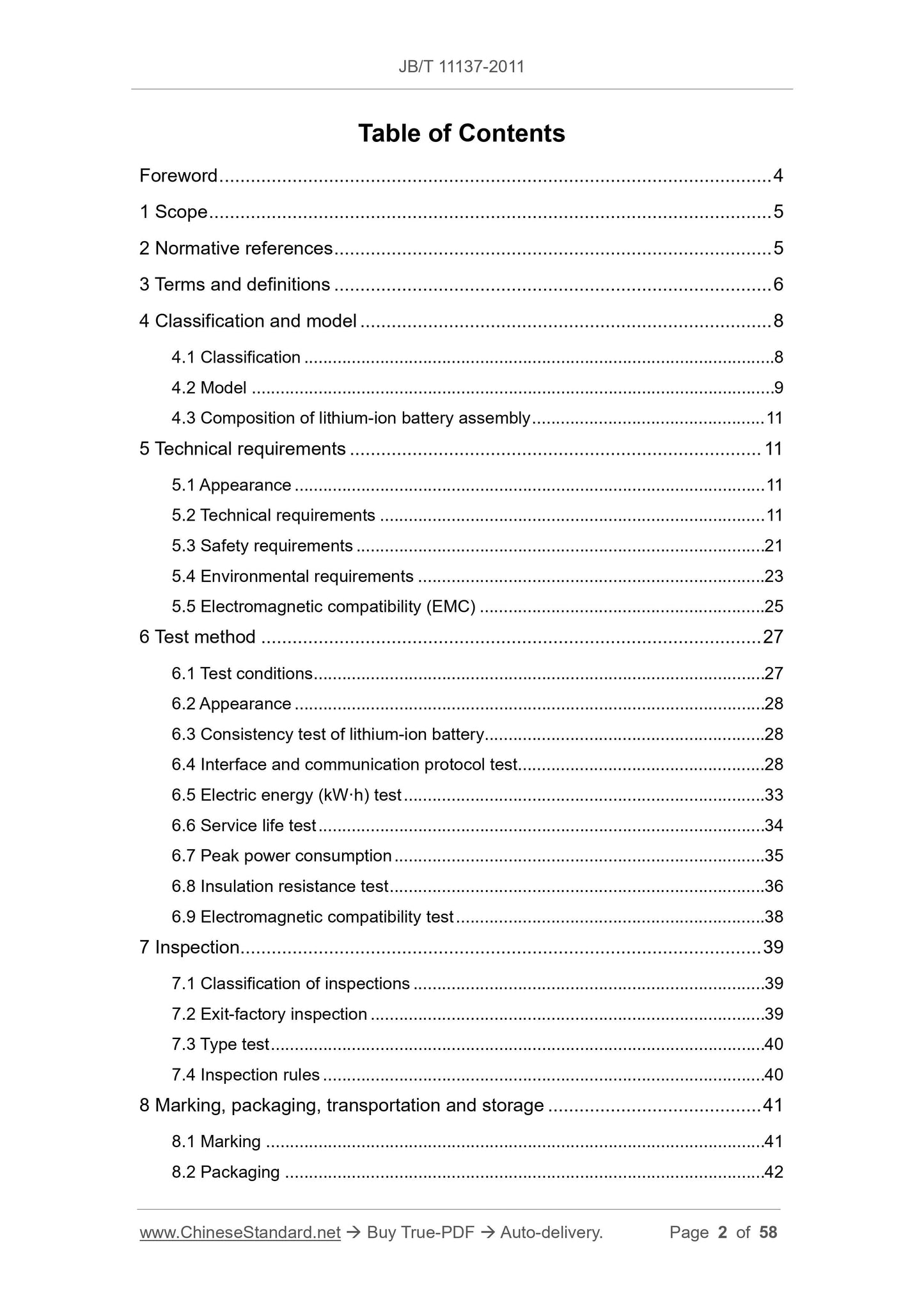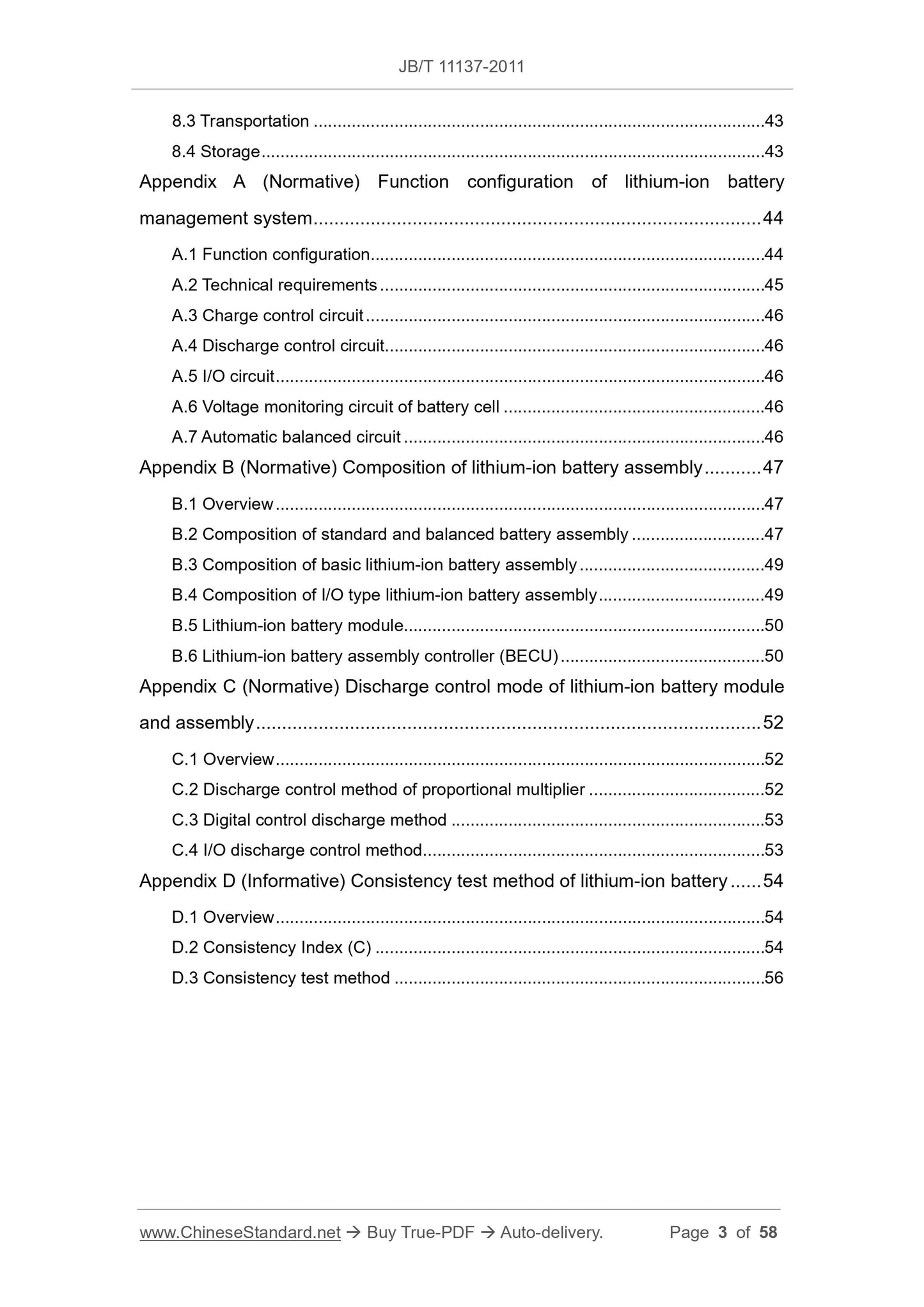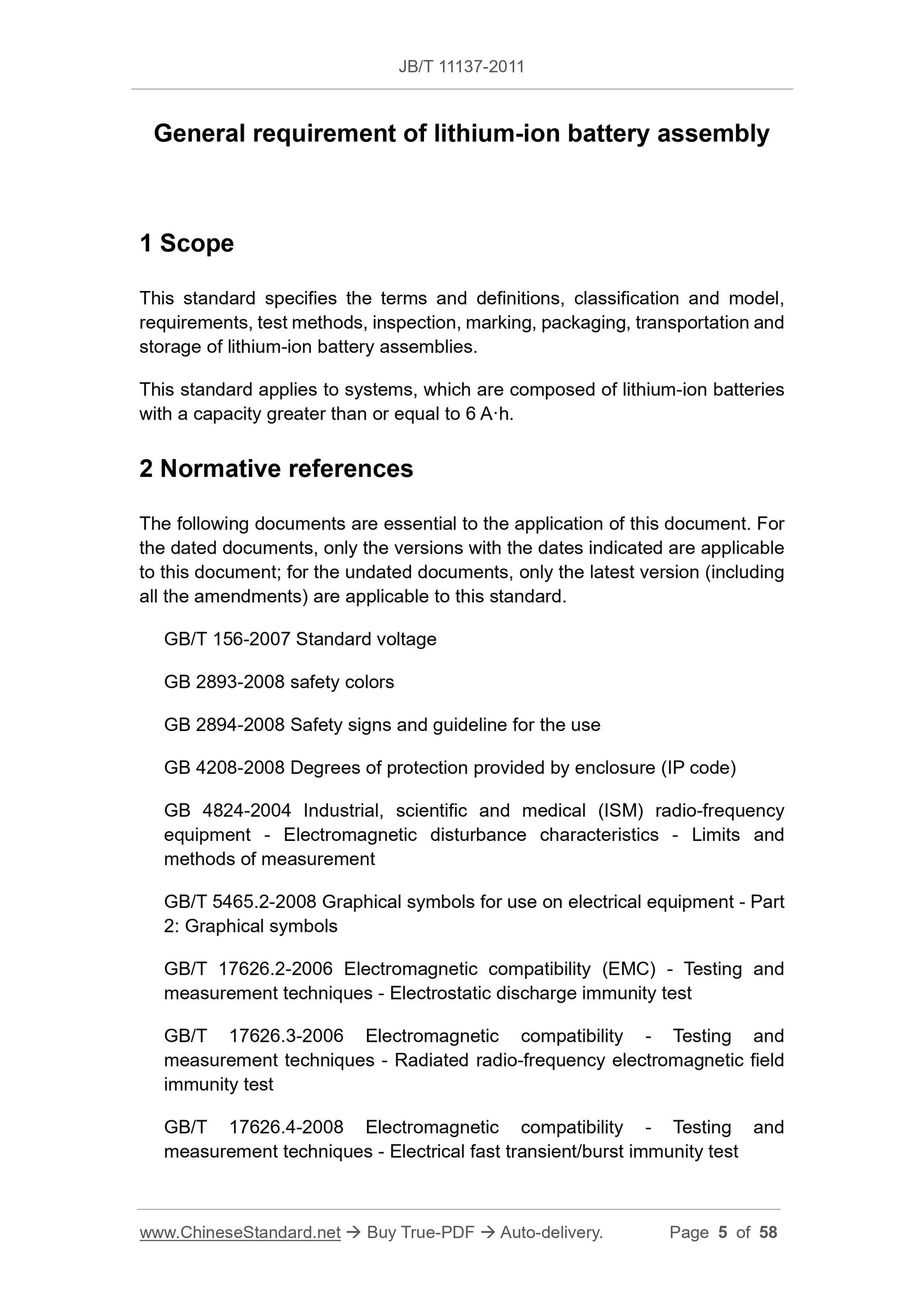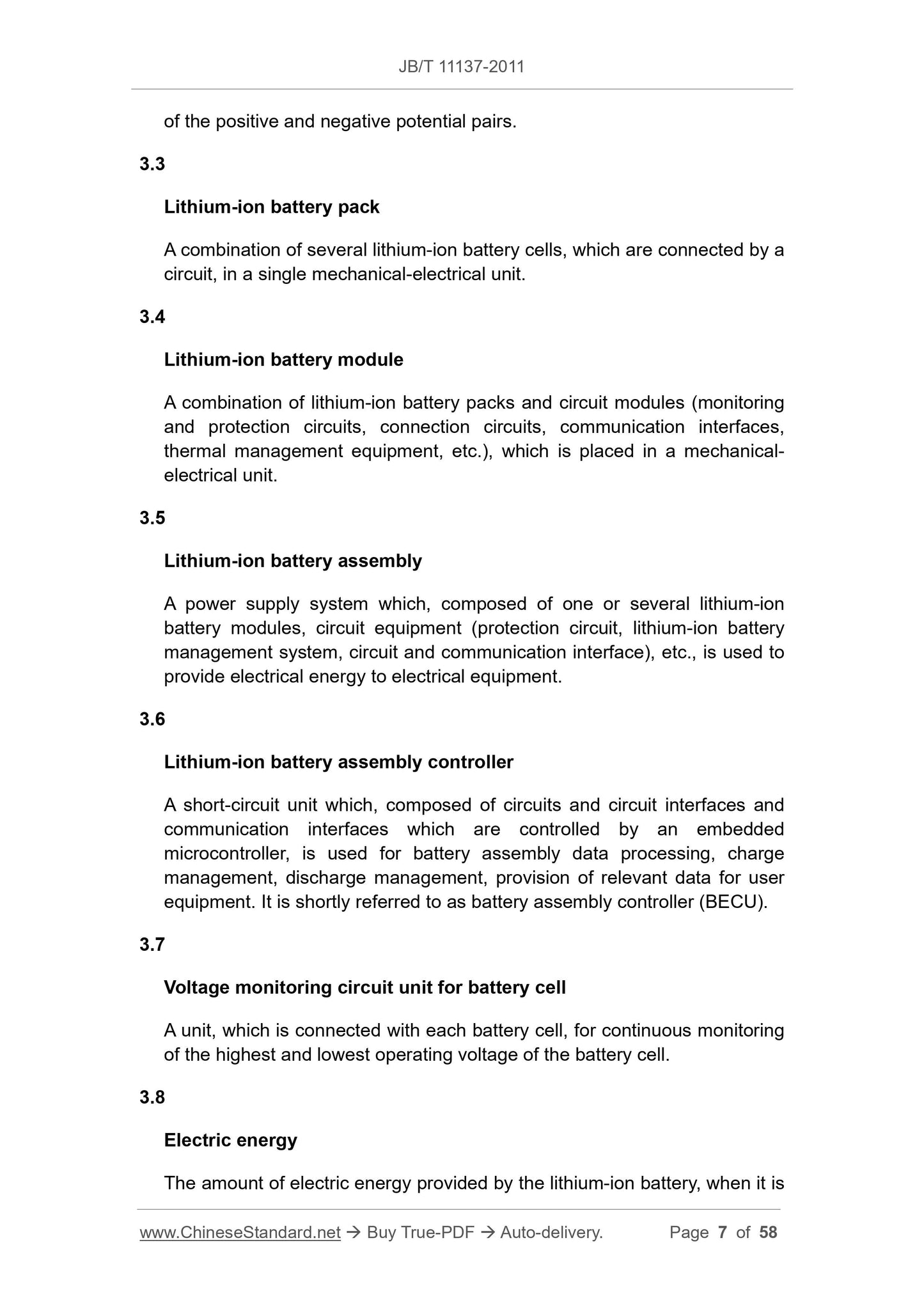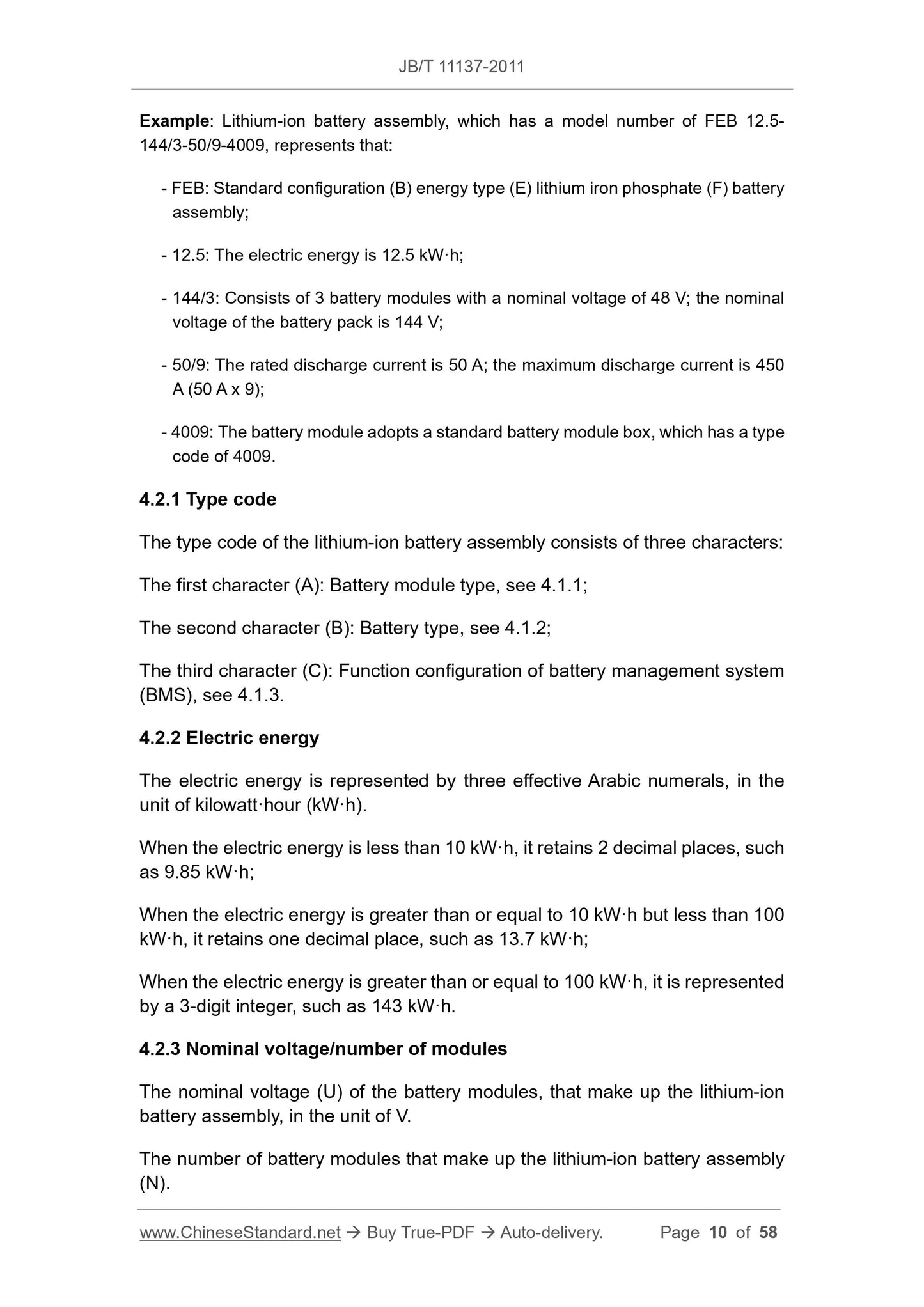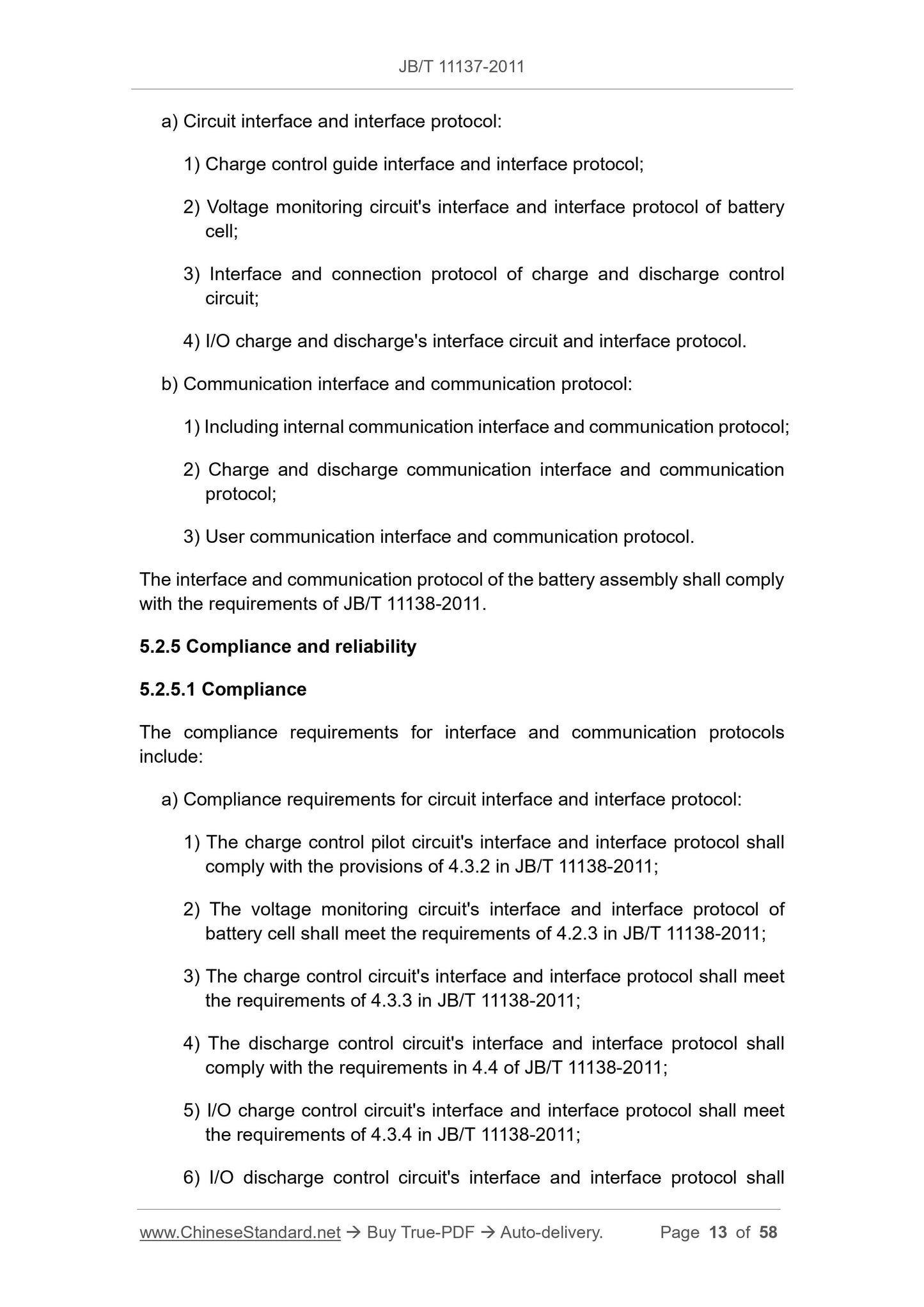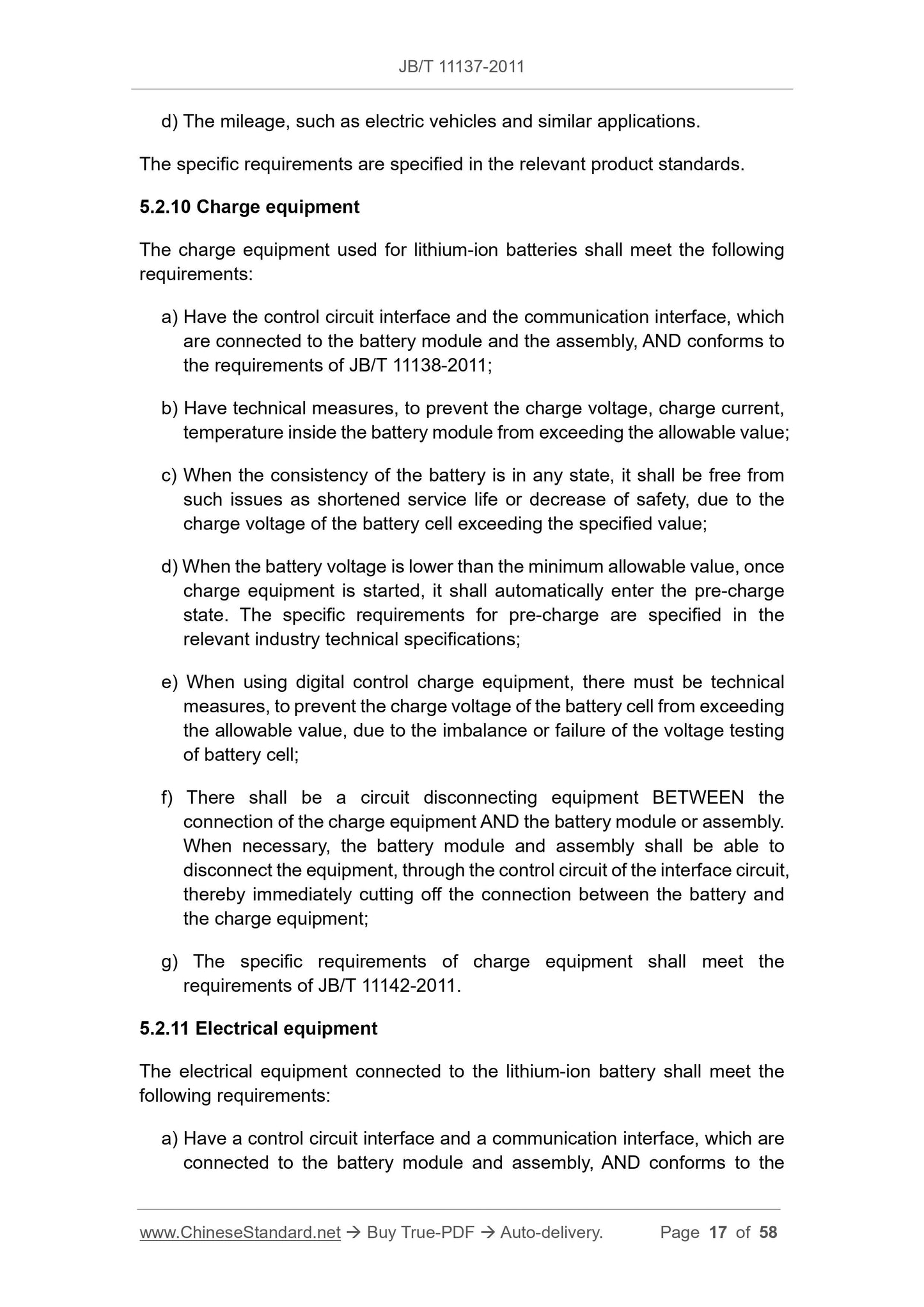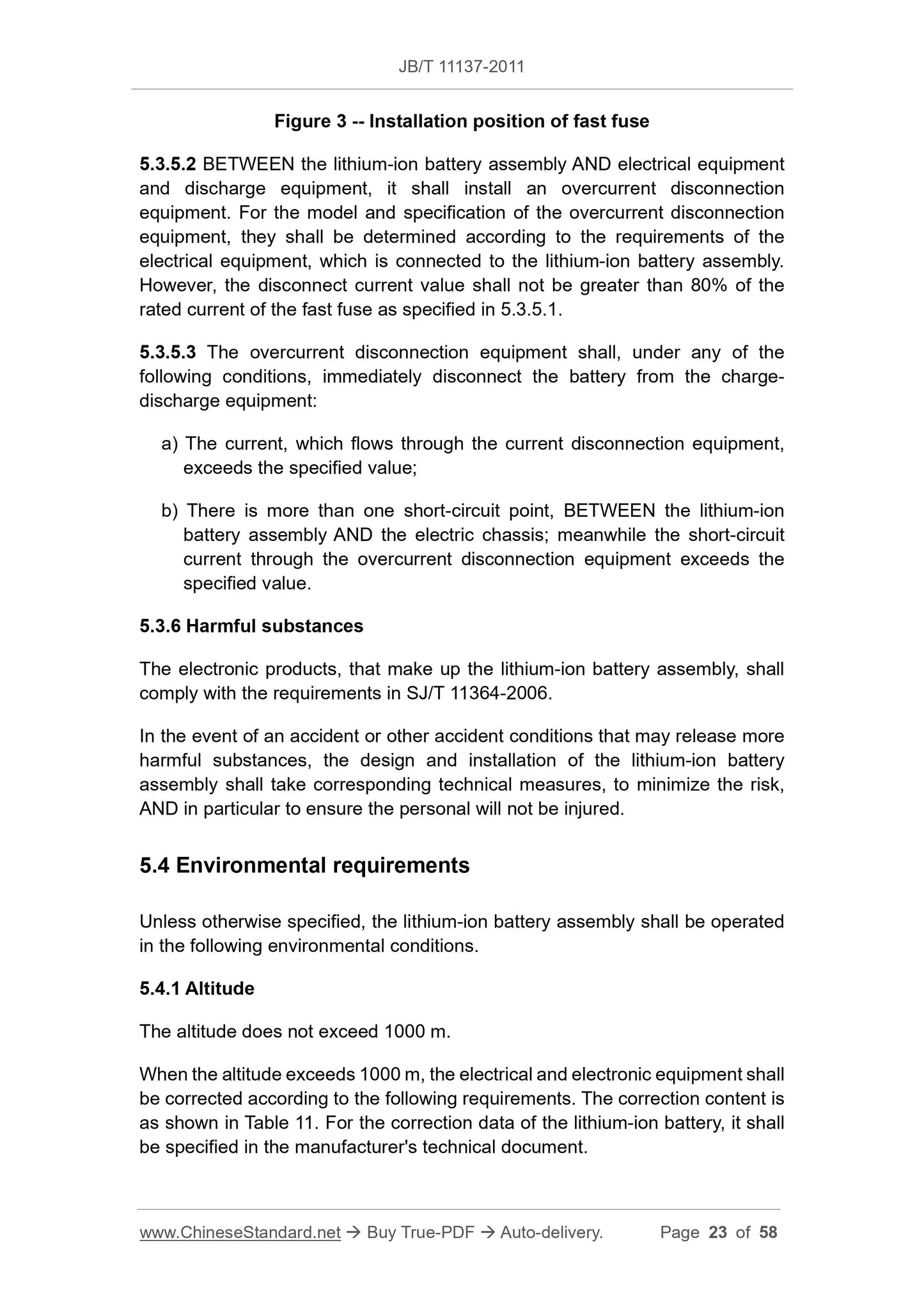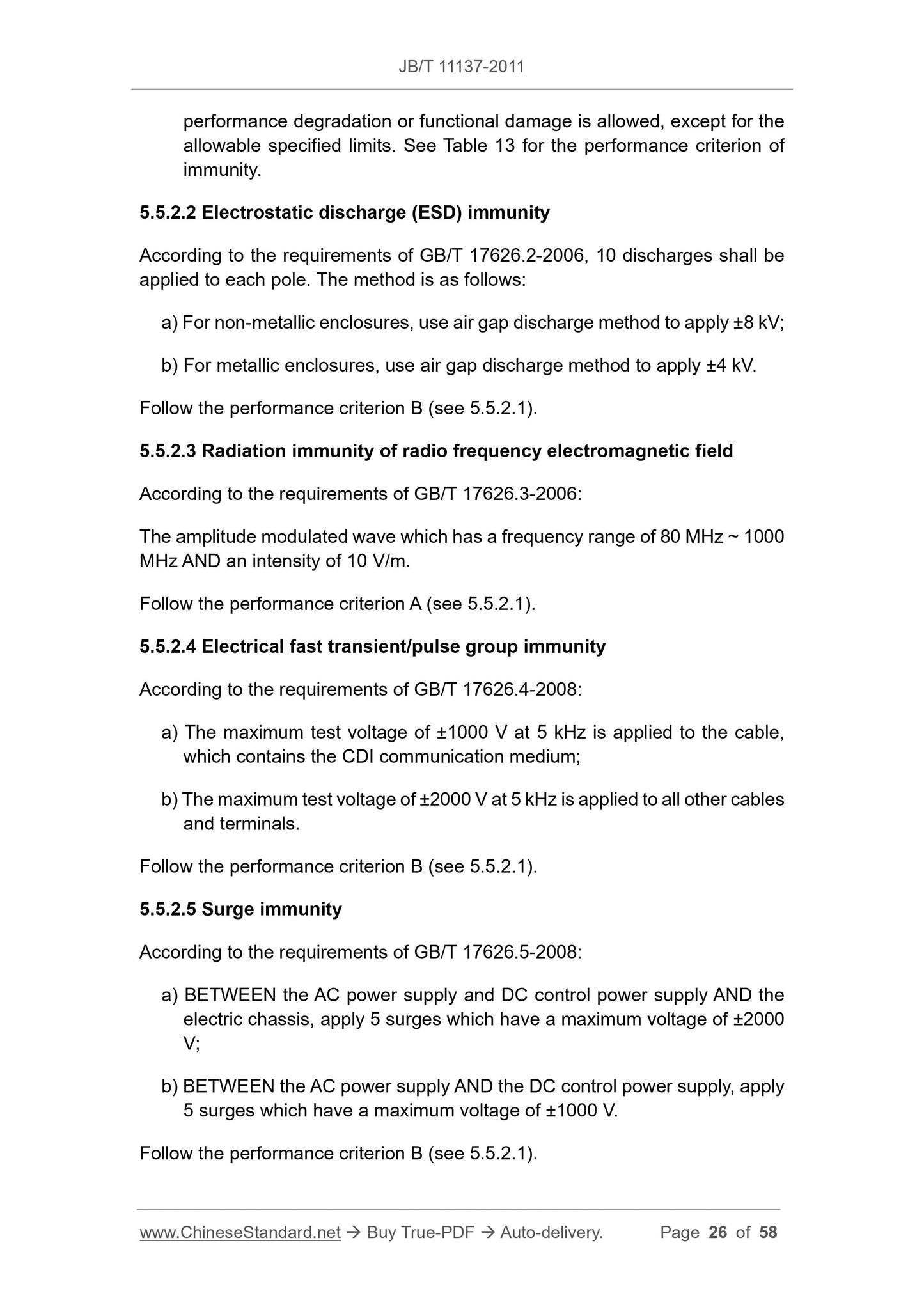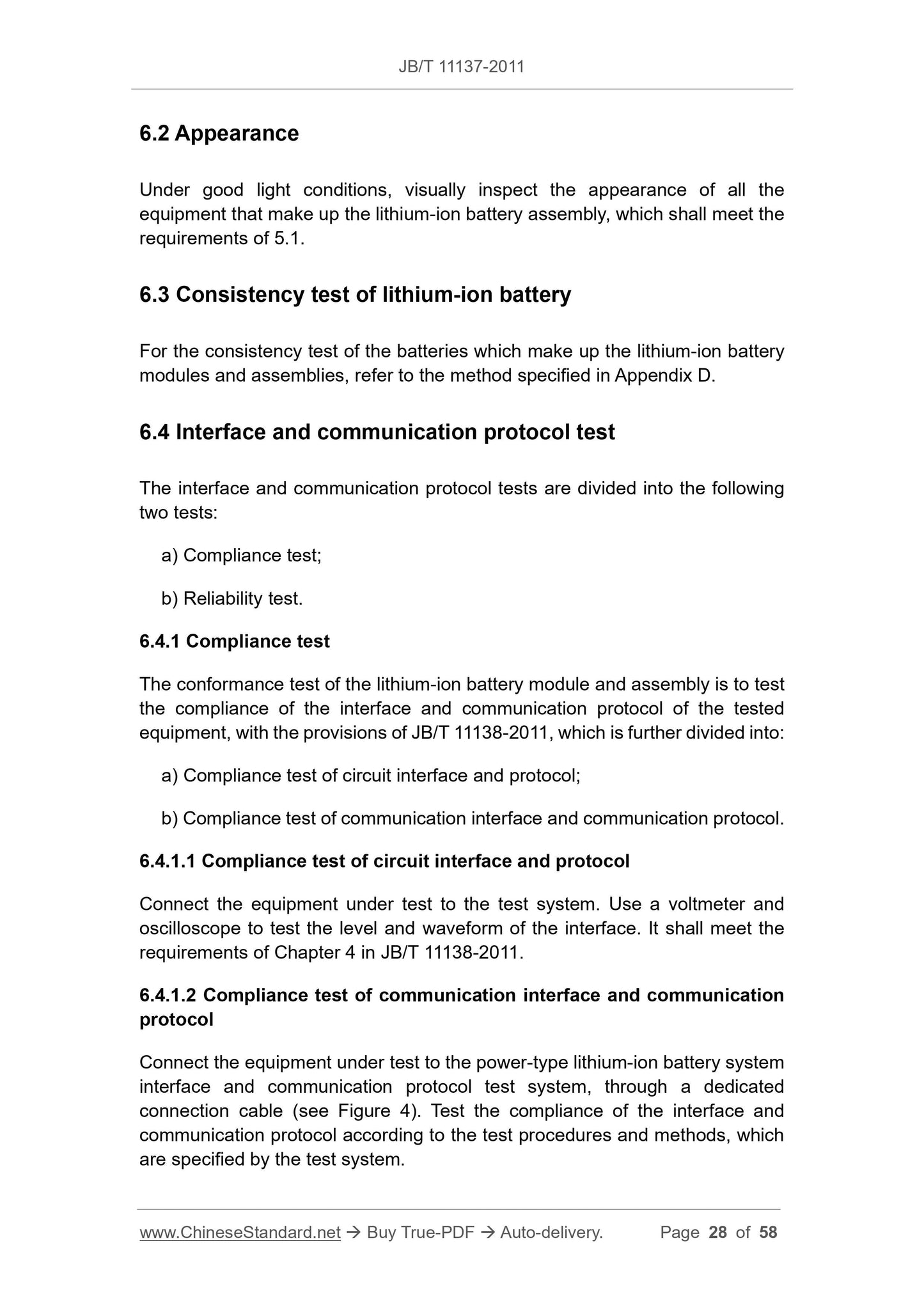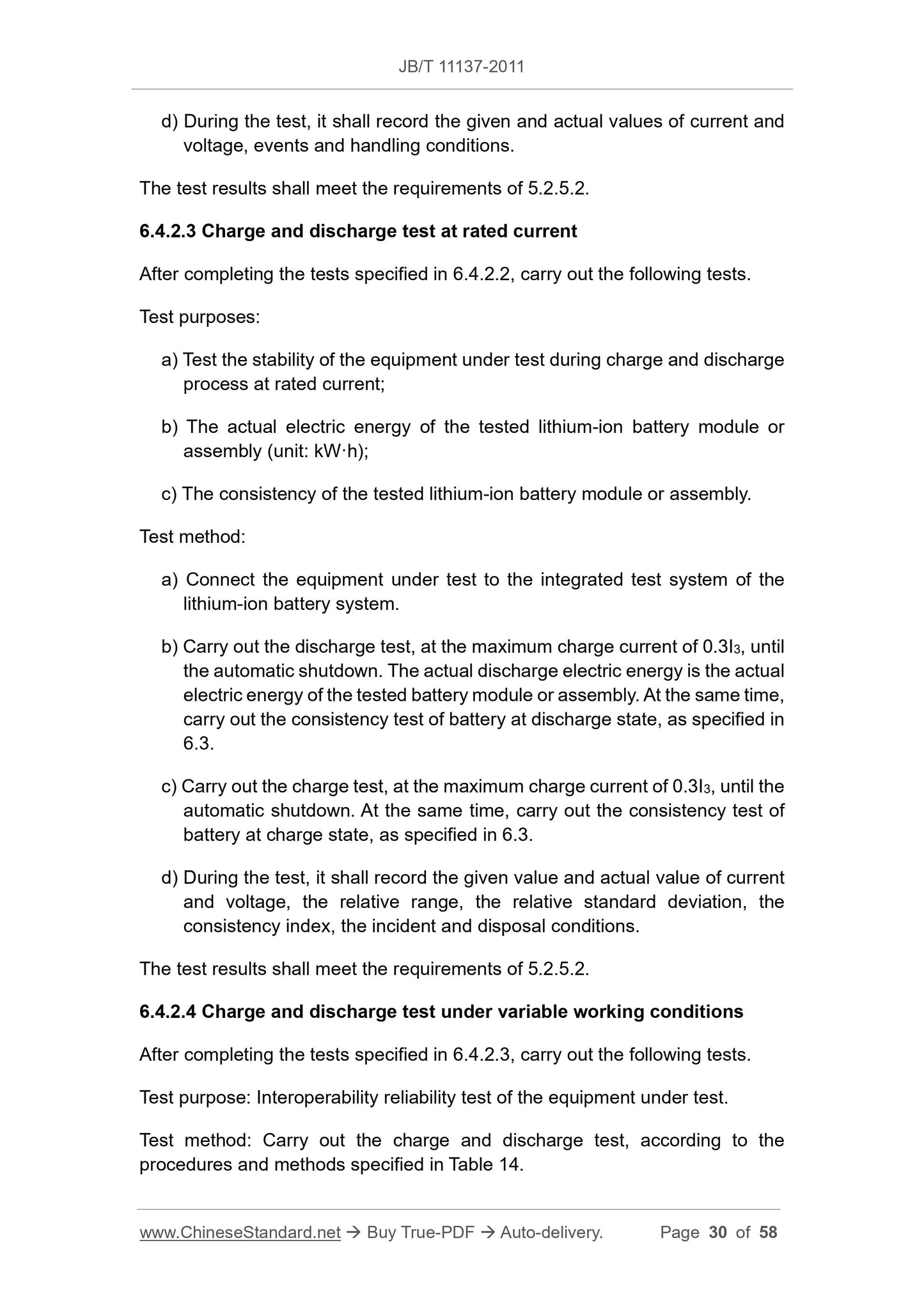1
/
of
12
www.ChineseStandard.us -- Field Test Asia Pte. Ltd.
JB/T 11137-2011 English PDF (JB/T11137-2011)
JB/T 11137-2011 English PDF (JB/T11137-2011)
Regular price
$325.00
Regular price
Sale price
$325.00
Unit price
/
per
Shipping calculated at checkout.
Couldn't load pickup availability
JB/T 11137-2011: General requirement of lithium-ion battery assembly
Delivery: 9 seconds. Download (and Email) true-PDF + Invoice.Get Quotation: Click JB/T 11137-2011 (Self-service in 1-minute)
Newer / historical versions: JB/T 11137-2011
Preview True-PDF
Scope
This standard specifies the terms and definitions, classification and model,requirements, test methods, inspection, marking, packaging, transportation and
storage of lithium-ion battery assemblies.
This standard applies to systems, which are composed of lithium-ion batteries
with a capacity greater than or equal to 6 A·h.
Basic Data
| Standard ID | JB/T 11137-2011 (JB/T11137-2011) |
| Description (Translated English) | General requirement of lithium-ion battery assembly |
| Sector / Industry | Mechanical and Machinery Industry Standard (Recommended) |
| Classification of Chinese Standard | K81 |
| Classification of International Standard | 29.220 |
| Word Count Estimation | 38,399 |
| Date of Issue | 2011-05-18 |
| Date of Implementation | 2011-08-01 |
| Quoted Standard | GB/T 156-2007; GB 2893-2008; GB 2894-2008; GB 4208-2008; GB 4824-2004; GB/T 5465.2-2008; GB/T 17626.2-2006; GB/T 17626.3-2006; GB/T 17626.4-2008; GB/T 17626.5-2008; GB/T 17626.6-2008; GB/T 18858.3-2002; JB/T 11138-2011; JB/T 11139-2011; JB/T 11140-2011; JB/T 11141-2011; JB/T 11142-2011; SJ/T 11364-2006 |
| Regulation (derived from) | Ministry of Industry and Information Technology Bulletin No. 13 of 2011 |
| Issuing agency(ies) | Ministry of Industry and Information Technology |
| Summary | This standard specifies the lithium-ion battery assembly terminology and definitions, classifications and models, requirements, test methods, inspection, labeling, packaging, transportation and storage. This standard applies to a capacity greater than or equal to 6A �� h lithium-ion battery system composed. |
Share
